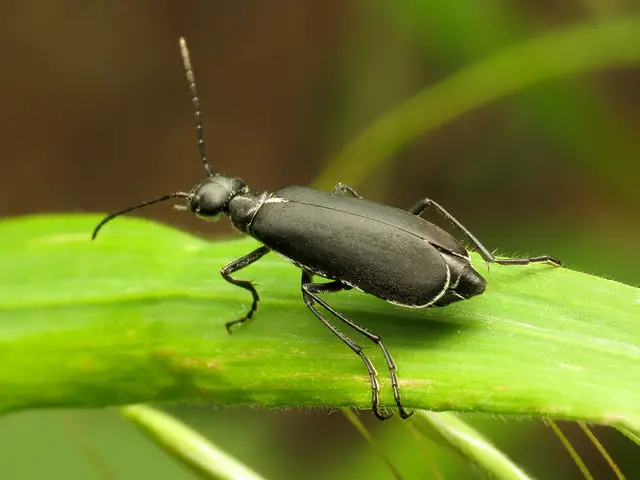Blister beetles are garden pests commonly found near leafy crops, flowering plants and hay crops. The beetles contain blistering agent in their body named as cantharidin. The chemical is used to treat lesions rendered by the pox virus. However, it’s ingestion can severely affect your gastrointestinal lining, urinary tract and cause blisters in the mouth. To protect yourself and the livestock from the toxic and detrimental insect we will share details surrounding the blister beetles, its life cycle, the damage it causes, and ways to control blister beetles.

What are Blister Beetles
Blister beetles come from the family of Meloidae, which contain about 2,500 species found all over the world. The adult beetles vary in color (ash gray to bright yellow with black stripes) and size (from 1 to 2.5 cm long), are soft-bodied, and contain a wide head with antennae on it. The flexible and soft wings may be flat, bright and striped . Striped beetles have brown to gray colors with vertical yellow strips on the wings. The blister beetles that are black in color have gray to cream bands at the margins. Ash-gray blister beetles are gray and black blister beetles are black in color.
Life Cycle of Blister Beetles
Blister beetles produce one generation per year. Adult beetles can lay up to 4000 eggs starting from mid-spring and continue to lay throughout the season. All the eggs do not survive, they are about a millimeter wide and 2 millimeter long which hatch in two weeks or less. The larvae are white in color and feed on clusters of grasshopper. The larvae pass through several stages and feed less when they reach maturity and become darkened. The larvae can have six to seven developmental stages or at least four to five stages before pupating. The adult beetle emerges after ten days and the same cycle repeats for the next generation.
Plant damage from Blister Beetles
Blister beetles feed on any leafy crops in your gardens such as pepper, eggplants, potato, tomato other Solanaceae members and leafy vegetable. They attack crops in clusters in late summer and severely damage crops in short time. The pest infestation causes cantharidin toxicosis on crops and make them unfit. Avoid cutting infested hay and allow beetles to leave them and, separate healthy bales and avoid the infested areas.
Prevention and Control of Blister Beetles
Farmers should make sure to prevent bristle beetles earlier before they render serious damage to your crops. Buy healthy and infection free crops, and inspect the area carefully before transplantation to avoid any damage in the future. The number of beetles increases early months and in July they attack crops in clusters. Fold your soil regularly and if you find blister beetles, hand pick them. Use gloves during handpicking and dump them in soap water. The blister beetles infestation start from surrounding plants. Remove grasses, weeds and other unnecessary plants as precautionary measure. Use row covers to keep blister beetles away from your garden in late summer.
If the beetles are too much to handle manually, you can use the following products to control blister bugs:
- Spinosad is an organic insecticide which breaks down into harmless substances in 1 to 2 days. The spinosad spray is an excellent way to control bristle beetles. Follow the manufacturer’s instruction manual before its application on plants.
- Crushed Oyster Shells can be used as a preventative method. They will not kill the pests but will help repel them from your crops. Use this as a non-lethal and organic method.